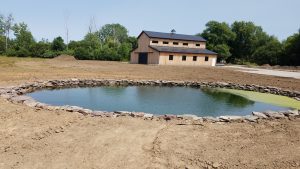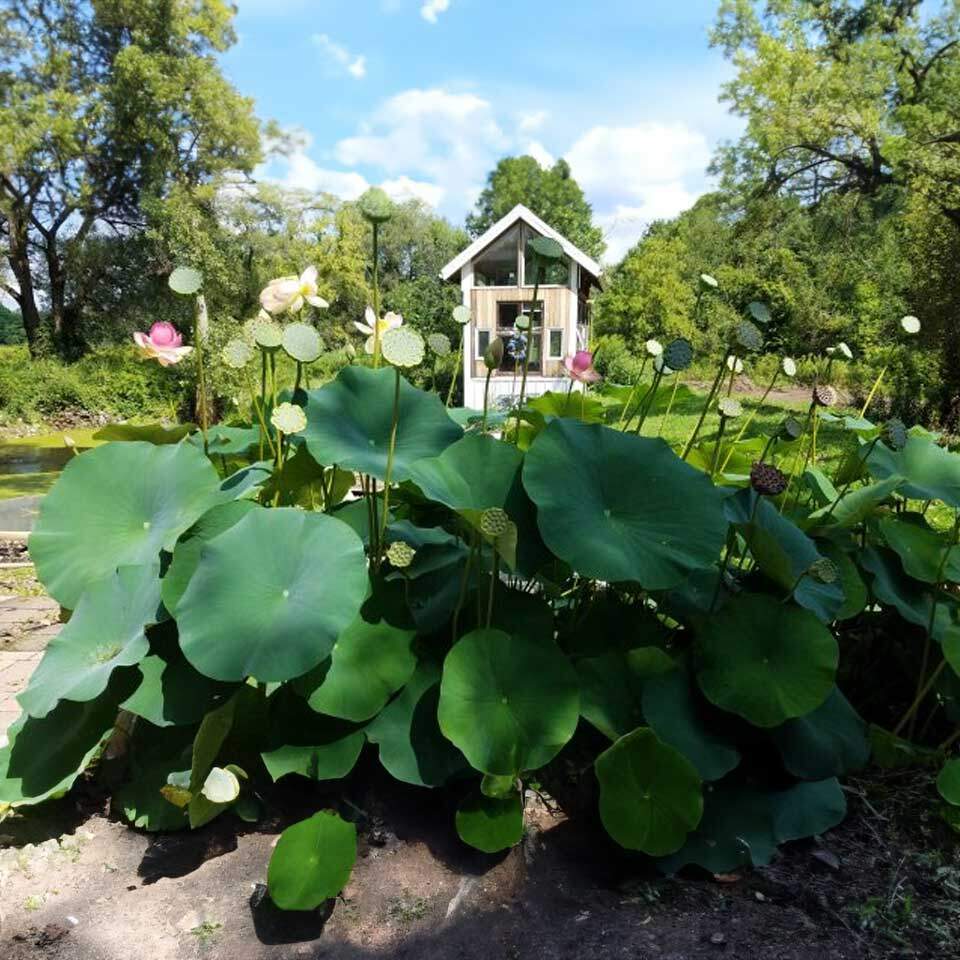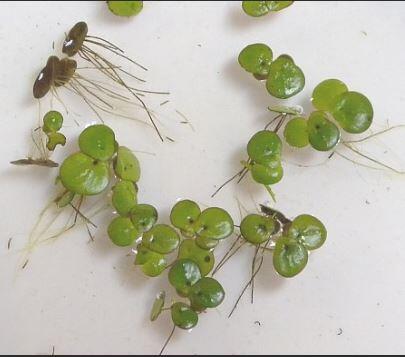A wildlife-friendly pond can transform your backyard into a serene, nature-filled oasis. In Rochester and Western New York, where the landscape is rich with forests, wetlands, and an array of native wildlife, creating a pond that attracts and supports local creatures is a rewarding experience. Whether you’re a nature lover, a birdwatcher, or simply looking to enhance the beauty of your property, a wildlife-friendly pond is a great way to invite biodiversity into your property. In this blog post, we’ll explore the best practices for creating and maintaining a pond that attracts birds, amphibians, and other wildlife while maintaining the natural balance of your ecosystem.

Creating a Natural Pond Environment
A well maintained, wildlife-friendly pond should mimic the natural ponds found in the Western New York region. This means having a variety of water depths, from shallow edges to deeper areas. Shallow zones are important for supporting a diverse range of plants, which provide food and shelter for insects and amphibians. Deeper areas are also needed for fish and provide a safe place for aquatic species during colder months when the surface water might freeze.
To make your pond even more inviting, incorporate natural materials around the edges. For example, you might want to line the perimeter with rocks or logs, which serve as basking spots for turtles and insects. Planting native aquatic plants is one of the most effective ways to encourage wildlife to make your pond their home. Native plants, like cattails, bulrushes, and water lilies, not only provide shelter and food for local wildlife, but they also help improve water quality by absorbing excess nutrients and preventing the growth of algae.
Supporting Local Wildlife with Plant Choices
Plants play a vital role in the success of a wildlife-friendly pond. In addition to supporting insects and amphibians, they provide the oxygen needed to maintain a healthy aquatic environment. Choosing native plants is especially important because they are adapted to the local climate and provide the best habitat for native wildlife. For example, the American Water Willow and Pickerelweed are great choices for the shallow areas of your pond, providing cover for fish and aquatic insects.
Floating plants like Water Hyacinths or Duckweed are also beneficial, as they help shade the pond, keeping the water cooler and providing shelter for smaller animals. These plants can also help absorb excess nutrients in the water, reducing the likelihood of algae blooms. Adding submerged plants such as Elodea and Coontail provides shelter for fish and promotes a balanced ecosystem by oxygenating the water.
Attracting Birds and Pollinators
A wildlife-friendly pond isn’t just for frogs and fish; it can also become a haven for birds and pollinators. To attract a variety of bird species to your pond, consider adding a few birdbaths, perching rocks, or even a small waterfall. The sound of running water will attract birds looking for fresh drinking water, especially in the hot summer months. Waterfowl, such as ducks and herons, are often drawn to ponds with ample aquatic plants and a food source, making your pond an ideal location for observing these beautiful creatures.
If you want to further enhance your pond’s appeal to pollinators like bees, butterflies, and dragonflies, plant a mix of flowering plants around the pond’s edge. Native flowers like Black-eyed Susans, Wild Bergamot, and Purple Coneflower provide nectar for pollinators, and their proximity to the water ensures that these insects can drink and cool off.
Maintaining Your Wildlife-Friendly Pond
Once your wildlife-friendly pond is established, maintaining it is key to ensuring it remains a thriving habitat. Regularly remove excess debris like fallen leaves and twigs, which can cause the water to become polluted. Avoid using chemical pesticides or fertilizers near the pond, as these can harm the aquatic ecosystem and the animals that depend on it. Instead, opt for natural water treatments, such as barley straw, which helps keep algae in check without harming wildlife.
During the colder months, take steps to protect the pond’s inhabitants from freezing temperatures. In Western New York, where winters can be harsh, it’s important to keep a portion of the pond from freezing by using an aerator or deicer. This ensures that fish and amphibians have access to oxygen throughout the winter, and it also helps protect the pond’s ecosystem from being disrupted.
Conclusion
Creating a wildlife-friendly pond in Western New York is a rewarding project that enhances your outdoor space while providing a sanctuary for local animals. By incorporating native plants, providing varied water depths, and offering shelter for birds and amphibians, you can create a thriving ecosystem right in your own backyard. Whether you’re watching dragonflies hover over the water, listening to the calls of local birds, or simply enjoying the tranquil beauty of a pond teeming with life, a wildlife-friendly pond is a joy to have year-round.


